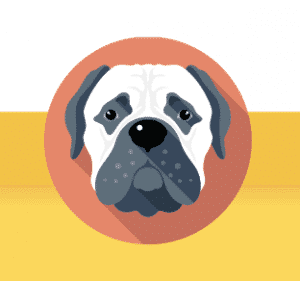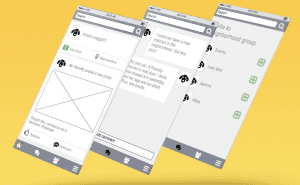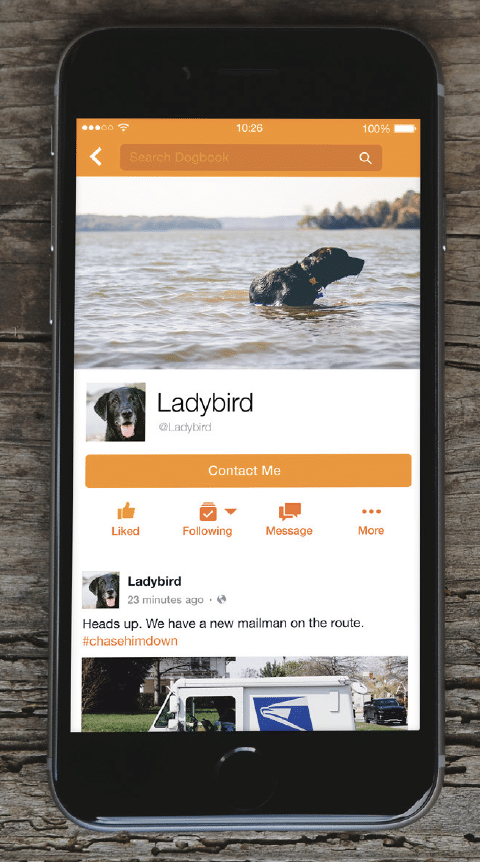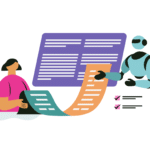This content was co-authored with Matt by Eli Gerson at D+I Creative.
Avoid the pitfalls of app development and bring your big idea to life.
Here’s something to consider: 80-90% of apps fail.
If you are an entrepreneur, intrapreneur, or CEO with a side-hustle, your great idea is the easy part. The challenge is what comes next.
The excitement of a great idea inspires quick action, but you need to slow down. There’s a saying we use in the 303 Software office: go slow to go fast. The most crucial part of a great app idea is first proving its viability as a product. Once you’re in the throes of app development, there’s no turning back without losing time – and money.
VALIDATE
Product and solution validation always comes first.
Before investing time and money, you must validate your idea with its target audience (not your family and friends – you need objective feedback). Identify the problem your software solves and validate the need and value of your app to its users or stakeholders.
Step one, form a problem statement by asking the following questions:
- Who is the intended audience?
- What are their problems?
- When and where do the problems occur?
- Why must these issues be fixed?
- What tasks are your end-users trying to complete?
- What pain points does your software solve?
- What gains are made through the use of your software?
Here’s an example problem statement. For the purpose of this blog, we’ll demonstrate best practices using the hypothetical example:
Facebook for dogs: Dogbook
What: Dogs with different owners, from different households, need to be aware of neighborhood happenings. They need to know things like:
- The location of neighborhood cats.
- Areas needing to be marked.
- Mail delivery schedules.
Who: Dogs of all ages and breeds who live with their owners.
When: Dogs need to broadcast messages throughout the day, but the most critical time is at night when their owners are sleeping.
Where: Suburban neighborhoods across North America, Europe, and Japan.
Why: Today, a dog’s only means of communication is the classic bark. This archaic communication method has obvious distance limitations, and the noise is bothersome to humans (pet-owners disrupt canine communication making it unreliable, at best).
Step two, define your revenue and market:
Explore revenue models.
It’s time to identify realistic revenue models. Investors need to feel confident in your ability to monetize the product. Subscriptions, advertising, affiliate programs, and license sales are worthwhile revenue streams. Explore the best options and use them during the design and development process.
What does it mean to your end-users?
Be thorough when considering the needs of your end-user. This will help you refine messaging and dial-in the purpose and uses of your solution. Consider the needs of your customers, their goals, challenges, and patterns of behavior. How does your solution respond?
Where do your customers spend their time?
Now that you understand who your customers are and what they need, it’s time to figure out how and where to reach them. Take stock of your ideal customers’ traits: age, location, attitudes, and behaviors. Gather and study market research and develop a comprehensive communication and sales strategy (this helps optimize your marketing budget). This process also defines the size of your potential market – something your investors will want to know.
Not sure how or if you are ready to validate?
Chat with our CEO
PLAN
Congratulations. You’ve validated the need for your product, and now it’s time to plan.
You (and your team) are the architects of a brilliant solution, and your plan is the blueprint for success.
A solid plan includes clear timelines, budgets, project members, and areas of ownership. Your plan needs to be thorough enough to encourage buy-in from stakeholders, but it must also have room for adjustment. Once complete, you’ll have a tactical and vetted approach to bring your idea to fruition.
Map-out key product features.
Your product’s key features are the attributes that make it possible for the software to function. Prioritizing these features allows you to build superior functionality into the product from the start.
The list of features also helps you estimate the effort necessary to build the application, including cost and time to market. This is the guidepost that keeps development on-track and stakeholders happy.
App Development – GO
It’s go-time.
Your product is validated and you’ve developed a blueprint for success. This phase of the development process is exciting as you watch your great idea come to life through design, development, and the completion of a go-to-market strategy.
If this phase feels familiar, that’s because it is. You’ve been living, breathing, and envisioning the outcome of your product since its inception. Now is your opportunity to watch your great idea become a tangible piece of software.
Give form to features: the design phase.
You must create visuals to represent your product’s principal features. This helps stakeholders grasp application functionality and shows the value and relevance of the product.
Use a handful of screens to illustrate features and workflows that express the purpose and functionality of your software.
Develop a brand identity.
Your brand story builds a bridge between a functional product and a memorable user experience. A brand story and corresponding elevator pitch establish an emotional connection between your software and the end-user. It also distinguishes you from the competition.
You create elements that define your brand – graphics, communication strategies, and marketing campaigns – but ultimately, your brand is determined by how the marketplace perceives it.
Distribution plan.
From the time you started the process of product ideation, you’ve been preparing to go-to-market. You have defined users, discovered their pain points, and built solutions into the product to create a viable and in-demand solution.
It’s now time to plan the logistics of distribution and build an audience of delighted customers.
The final product: Dogbook brand story.
Ours is a world of infinitely connected humans. We text, talk, ping, tag, like, tweet, and snap each other thousands of times each day. This is a world that neglects man’s best friend.
Dogs communicate through archaic means: barking and peeing, desperate for their peers to get the message.
Dogbook is the answer. It is an innovative platform designed to empower canines with the ability to instantly communicate with friends, neighbors, family, and a global community of like-minded pups.
With a user-base of over 200 million households worldwide, Dogbook users can collaborate, schedule cat chases, track the movement of postal carriers, and communicate one-on-one from the comfort of their bed (or doghouse). Dogbook is free for users and offers an unprecedented opportunity for ad-based revenue, cross-selling, and promotions for dog-focused brands.
The future is bow-now.
From founding to funding.
The substantial effort put into product development on the front-end earns you confidence when presenting your product to investors and the marketplace. This method of software development expresses the value of your product, defines the potential of your target audience, and shows your team’s ability to plan and execute a development plan.
Your idea is great. We will help you with what’s next.
Validate, plan, and go (get funded).









